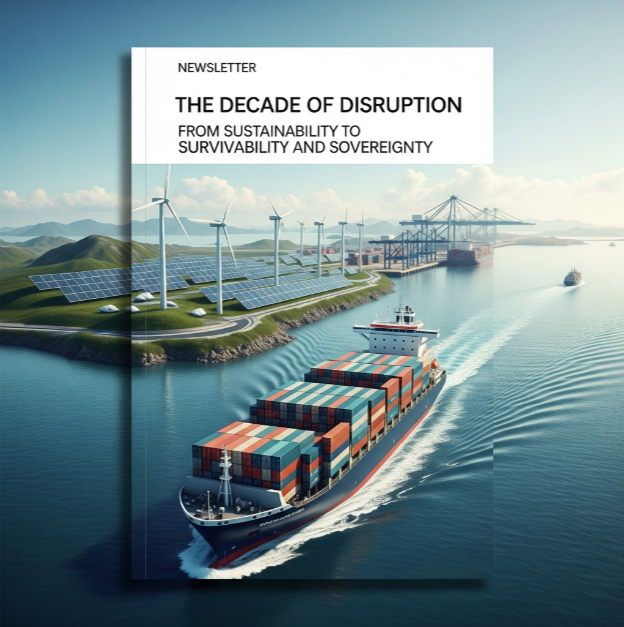
Global trade isn’t just vulnerable—it’s already breaking down under the weight of climate disruption, geopolitical tension, and chokepoint overload.
In recent years, we’ve seen significant disruptions that underscore the fragility of our global supply chains:
Severe port congestion continues at key Asian hubs (Shanghai, Ningbo, Singapore, Busan), driven by slow redeployment of vessels, container shortages, and tariff-driven cargo surges. Despite extra-loader sailings, the available capacity remains tight—forcing shippers to book 4+ weeks in advance just to secure space.
Rise of the dark fleet—a shadow network of ships operating outside traditional tracking systems—has added layers of opacity, compliance risk, and market distortion, particularly in energy and sanctioned cargo flows.
Red Sea Attacks: Since late 2023, Houthi attacks in the Red Sea have disrupted maritime trade routes, causing a 90% decrease in container shipping through the area and forcing over 2,000 ships to reroute around Africa, adding significant time and cost to global trade.
Panama Canal Drought: In 2024, the Panama Canal experienced a severe drought, reducing its capacity by 40% and delaying over 70% of shipments. This bottleneck affected approximately 5% of global shipping, leading to increased costs and higher greenhouse gas emissions.
Suez Canal Blockage: The 2021 blockage of the Suez Canal by the Ever Given halted trade between Europe, Asia, and the Middle East, tying up goods worth an estimated $9.6 billion per day. Over 369 ships were queued, highlighting the vulnerability of this critical chokepoint.
These events are not isolated incidents but part of a pattern indicating that our global trade infrastructure is under siege from climate change, geopolitical tensions, and systemic vulnerabilities.
The era of viewing ports merely as economic facilitators is over. They are now strategic assets requiring robust, adaptable frameworks to withstand and respond to multifaceted threats.
In light of these developments, it’s imperative to reassess and reinforce our port strategies, focusing on resilience and adaptability to ensure continuity in the face of ongoing and future disruptions.
In the Decade of Disruption, the old boundaries between sustainability, security, and strategy no longer hold. Ports aren’t just infrastructure—they’re strategic command centers for climate response, energy security, and national defense.
Climate change isn’t just an environmental issue. It’s a security threat.
As I shared at the AAPA POWERS Summit:
“Climate change is a national security issue. It affects how we move goods, defend borders, and maintain energy independence.”
The U.S. government has already acknowledged this shift.
These policy moves confirm what many in the industry have long understood: Ports and maritime infrastructure are essential not just to trade—but to defense readiness, energy security, and economic autonomy.
This is the era where resilient infrastructure becomes strategy.
Despite these risks, many port strategies remain siloed and outdated:
We’re planning for yesterday’s world, not today’s disruptions.
We must shift from compliance to consequence thinking. From sustainability reports to survivability frameworks.
At SeaTrain Technology , we’re not just building submersible cargo gliders—we’re reimagining what it means to move goods securely, silently, and sustainably in a volatile world. This is just one example of the innovation-security nexus taking shape across shipping, defense, and energy sectors.
The most prepared ports in this decade will be those that:
Ports that embrace this shift will lead—not just survive. And those that don’t? They risk becoming the next cautionary headline.

📩 Want to explore your port’s next steps? Book a call with us!
💬 I’d love to hear your thoughts—how are you adapting to this new era?

I’ve spent the past 18+ years helping ports, supply chains, and global businesses turn sustainability goals into real, measurable results.
From leading billion-dollar infrastructure projects to building my own consulting firm, I’ve seen how the right strategy can turn pressure into opportunity.
My mission today is simple: help leaders like you build sustainable, future-ready businesses that don’t just check boxes—but actually make an impact. One decision, one project, one team at a time.
Let’s build what’s next—together.
Have a project or idea in mind?
I’d love to hear what you’re working on.
Book a quick call here